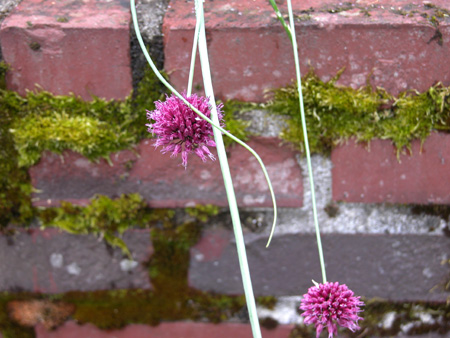Posted by June Underwood on August 3rd, 2007

I was struck by Sunil’s post about his alteration/destruction of work into which he had put so much effort. In fact, I liked his revised “Palimpsest” very much, although I can see that it doesn’t resemble much of what he has shown us before this.
Because I have so many failed, partly completed, destroyed, altered, and despised pieces sitting around in boxes, baskets, photos and my memory, I thought I’d run through a taxonomy of my bad work and its place in my art-making universe. Ultimately my question is whether I’ve made adequate categories of “failure” or if there are others that could be added; in addition, I wonder if you can suss out what “runs” your failures — what, particularly if it’s not just a problem of quality, causes you to throw up your hands and ditch work.
So here are my categories. There’s work that simply fails — period, full stop. There’s work that gets altered, thus morphing into something else. There are series that come to an abrupt halt. And finally there’s work that’s put on hold.
Failed work has its own subcategories, of course, including failures to work the materials, failures of skill, failures of insight, and failures of resonances within one’s conceptual worlds. more… »
Posted by Sunil Gangadharan on August 2nd, 2007
I was recently interviewed about my artwork and I found myself grappling with a concept about artwork that was dormant in my mind for a while.
I have always had a weakness for trying to find meaning in art and I strive to find and sometimes interpret meanings that the artist would not have even remotely thought of… This is a good thing as it is with reflection and thinking that we attain a deeper understanding of the forces that we encounter in today’s world.
My approach to looking or developing artwork, involves asking the following questions:
— Does the artwork evoke an emotional response in the onlooker at this point in time?
— How would a person interacting with the same at least 200 to 300 years from now perceive it and would it still carry at least some portion of its original emotional import?
This is the litmus that I use to view work and gauge its significance. Now I understand that very few of us can predict what our future generations would have in their minds with respect to aesthetic sensibilities, but putting on this lens is one way I tend to weed out the mountains of artwork that is churned out by thousands of artists all over the world these days.
I know a lot of you would not subscribe to my old fashioned, outmoded views, but I would very much be interested in learning about criteria that you consciously or unconsciously employ in gauging the significance of artwork that you behold.
Posted by Karl Zipser on July 28th, 2007
What to think about when making art? Last week’s post brought some valuable insights. First, Jay helped to refine the question. “Depends upon where in the project you are,” he wrote. “If you’re making aesthetic and structural decisions, then you will concentrate on the task at hand.” Steve agreed that there are different stages of work, adding that he finds satisfaction “in consciously working out ‘problems'” in making art. more… »
Posted by Sunil Gangadharan on July 26th, 2007
How many times have you finished working on your art thinking that you have completed it and then come back to it later and completely change the piece? And, I don’t mean touching up or toning highlights or anything – just a complete restructuring (and sometimes destroying) of the original artwork. more… »
Posted by Karl Zipser on July 23rd, 2007

This painting from 1999 is made with oil colors on a chalk ground on a wood panel. There are interesting aspects to this picture that make me want to take another look at it.
I like the mood that the colors and rhythms of the landscape give in contrast to the pale woman.
The rhythms of the grass and the receding landscape, the whites of the clouds, each sets up its own system. The woman in contrast has a simple rhythm of points — her nipples mirror her eyes. She is still and silent, but the landscape seems to reflect the texture of her thoughts and feelings — this is how I see it. The sharp edges and mellow forms are part of this texture.
All the oddness of the painting holds together because of its “internal coherence”, to borrow Arthur‘s expression.
I think that taking a careful look at older work is important because along the way I sometimes loose site of the things I did before, perhaps because I didn’t appreciate them earlier. Have you ever “rediscovered” an older work of your own, finding something in it you never saw before?
Posted by Karl Zipser on July 22nd, 2007
Art can take a lot of time to make. What should one occupy one’s mind with during that time? Does an artist need to think about each brush stroke? Or does the creation of art become intuitive?
If art making becomes intuitive rather than thought-based — and to me that sounds appealing — what should become of word-based thought when one is working? Is it better to think about something else, to distract oneself with music, a book on CD?
This is something I’ve been thinking about while painting. What do you think about?
Posted by June Underwood on July 20th, 2007
I’m in a maundering mood, trying to pin down the meaning of a tiny revelation I had the other day.

I was doing my 7 AM walk with my digital camera, getting photos of flowers, shrubbery, moss, walls, the usual panoply of residential flora on the pleasant July streets of Portland Oregon. But suddenly I found myself seeing the foliage and supports, stems and stamens, bricks and buds, as Art.
more… »


